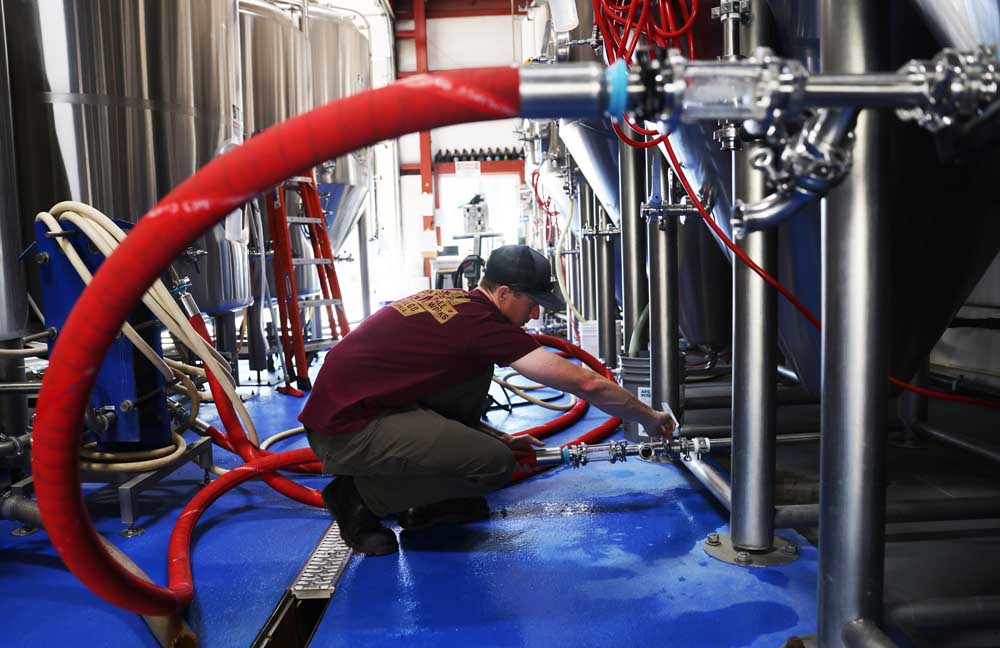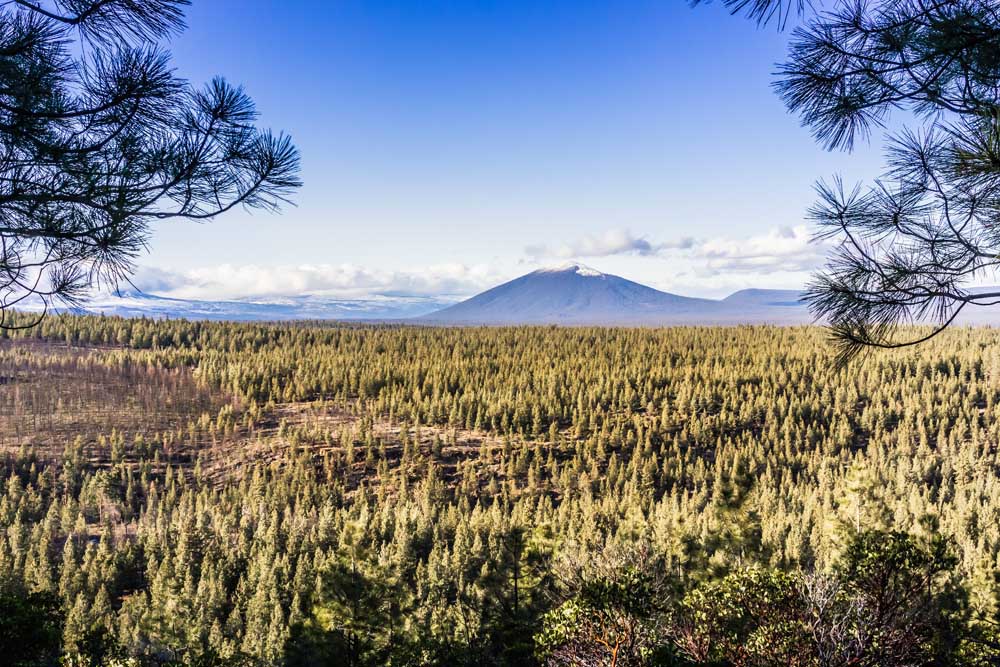Growers, local brewers tap into soil types, hops aroma to craft variety of tasty beers
Published 9:00 am Sunday, October 23, 2022

- Bend Brewing Co. brewer Brandon Dare works in the brewing facility in Bend. Brewers sometimes select hops for their beers based on soil types and local growing conditions, just like wineries.
Open a can of cold, craft beer and the first thing you notice is the aroma of hops.
Hops are unique. They are one of three key ingredients that go into beer, and brewmasters pay particular attention to them at this time of year. That’s the case for brewmaster Sean Albrecht, who each fall hand selects the hops he’ll use for the rest of the year in Bend Brewing Co.’s 15 barrel system.
“We’ll rub the hops between our palms, and discuss the flavor profile to see if it fits with our beers,” Albrecht said. “Hops contribute to the bitterness to counteract the sweetness of beer and you get the flavor and aroma depending on the amount we use.”
It’s the same at Worthy Brewing, where head brewer Brian Chapman takes a team out to select hops — but only those grown in Oregon.
“The chemical compounds also vary from farm to farm,” said Chapman.
Hop growers focus on the aromatic potential of hops because of the popularity of hop-forward beers like India pale ales.
An Oregon State University study on the chemistry of hops, released in August by researchers from the college of Agricultural Studies, found that hops are like wine grapes. The environment they’re grown in affects their aroma and flavor. Sunshine, soil and even the smoke from forest fires can affect the quality of the hops, said one of the study’s authors, Tom Shellhammer, Oregon State University Nor’Wester professor of Fermentation Science.
Beer gets its flavor from a combination of aroma and taste, which hops plays a major role in. Depending on where the variety of hops are grown can change that smell and taste of that beer, especially in those hop-forward beers like hazy, fresh hops and pale ales, the study found.
“Knowing that region makes a difference, makes the selection easier,” Shellhammer said. “There are up to 50 different lots of the same variety of hops. So when you’re looking for consistency with the same kind of hops expression, it’s important knowing that there are differences.”
While not many hop farmers call Central Oregon home, there are 23 craft brewers just in Deschutes County who buy their hops from either the Yakima Valley, in Washington, or from the Willamette Valley.
A successful craft brewing industry is important to the Central Oregon community as payroll during the second quarter of the year totaled about $10.5 million, said Jake Procino, Oregon Employment Department workforce analyst.
The county craft brewing industry employs 750 people, Procino said.
“Deschutes County has historically played an outsized role in the statewide brewing economy,” Procino said. “Despite the fact that in 2019 Deschutes County only accounted for 5% of total statewide payroll employment, Deschutes County breweries accounted for 28% of total statewide brewery employment.”
Each fall, right after the harvest, brewers will select from either fresh flower hops or dried pelletized hops, looking for the precise aroma to meet the flavor profiles of their established beers. Craft beer makers mostly rely on their nose to find the right hops for their brews.
Most of the country’s hops are grown in Washington’s Yakima Valley, which produces 73% of the nation’s supply. Willamette Valley produces 11% and Idaho 16% of the nation’s supply of hops, according to the U.S. Department of Agriculture.
Oregon and Washington do so well because it’s the right location on the globe that produces the sweet spot for hop farming, said Nate Safty, owner of Deschutes Hops, which stopped growing hops in Central Oregon during the pandemic.
“The growth comes at the summer solstice when there’s 14 hours of sunshine,” Safty said. “If you don’t have that, hops won’t grow.”
Trevor Hawman, owner of Bridge 99 Brewery off Empire Avenue in Bend, had used locally grown hops from Safty’s farm for his IPAs.
This year, he bought some locally grown hops, he said, from Tumalo to brew on his 15 barrel system.
He produces about 800 barrels of beer a year. He also gets hops from the United Kingdom.
“Picking out the hops can be difficult,” Hawman said. “There’s endless options. Typically you’re looking for a flavor profile. You’ll get a sample of hops and smell them and add it to plain beer to see what kind of beer you want.”
When craft brewers know where the hops are grown they can be strategic about developing the flavor profile and the beer will have a signature aroma, Shellhammer said.
The OSU study analyzed two varieties of hops, Cascade and Mosaic, from the 2020 harvest grown at 39 locations in the Willamette and Yakima valleys. Scientists looked at the chemical compounds in the hops and then had a panel of people to smell the hops.
The two methods identified that Cascade hops when grown in Oregon had a strong citrus, floral, fruity and herbal aroma.
Cascade hops from Washington displayed more of a tropical and sweaty aroma.
And Mosaic hops from Oregon had strong citrus, fruity, floral and tropical aroma, while the same hops grown in Washington had vegetal and woody aroma, according to the findings.
“These results will help hop growers in the Pacific Northwest as well as brewers utilizing hops from these major hop-growing regions to produce regionally unique beers, or to blend hops in a way that results in standardized and consistent beer quality,” Shellhammer said.
With Worthy’s team approach to hop selection, it almost guarantees that even if someone’s nose is off that day, they’ll get the hops they need.
“We don’t always agree on the aroma,” Chapman said. “That’s why we do a blind panel of tests because we don’t want to affect the perception of someone’s judgment.”
It’s that regional identity that the connoisseur will notice. The nose always knows, Chapman said.






